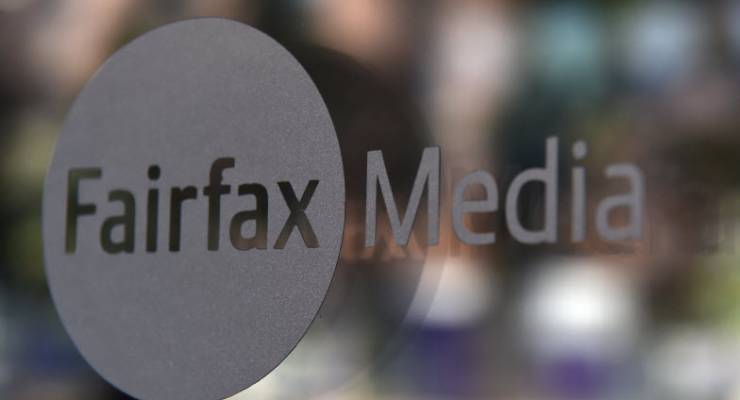
Some of the brightest minds in finance have been trying to answer a big question: how much is a newspaper today actually worth?
Not: What’s the cover price? Rather, what would it cost to buy a newspaper? Or more importantly for the current newspaper owners: how much can I sell it for?
Last week, we got an answer: It’s $1. One US dollar, actually, so let’s call it AUD1.25. That’s what the media conglomerate Tronc (formerly the Tribune Group) paid for New York tabloid the New York Daily News.
As it happens, that’s also the Daily News cover price — the same as the price of buying a single copy from the newsstand in the streets of New York, assuming you can find one.
This is actually an improvement on the assessment by Credit Suisse analyst Fraser McLeish of the value of Fairfax’s metropolitan newspapers reported in February this year. He estimated the papers were worth, well, nothing, so $1.25 is not to be sneezed at. The SMH and The Age between them gets us to $2.50!
As any analyst can tell you, the value of any commercial entity is the sum of future cash in-flows net of future cash out flows, discounted to the present. Got it? That’s why it’s called net present value.
The local newspaper exchanges in 2016 were surprising low: News Corp sold the Perth Sunday Times (along with the Perth Now website) for about $12 million in May and bought APN’s 12 regional newspapers and related community papers in June for $37 million.
[Media monopoly: where journalists and readers don’t pass Go]
We don’t know the earnings assessment behind the Sunday Times sale. The APN sale was a surprisingly low twice current earnings, which indicates a low confidence in future earnings, even when boosted by cost cutting and job losses that flow from consolidation.
Future earnings of newspapers will only be positive if costs are less than income. That means cutting costs to bend the cost curve so it runs below income projections. But newspapers have high fixed costs and low variable costs. That’s what once made them such profitable.
Now, it’s only a matter of time until that income line crashes through the fixed costs floor.
The truth is, the value of a paper may actually be less than zero. If it were really zero, any publisher could simply lock the doors and walk away. Management theory tells us: if a business is a dog, under the Boston Consulting Group’s famous taxonomy, just get rid of it. Of course, a real dog lover would disagree. Newspaper owners hang on to their properties for reasons other than value.
And walking away it’s not that easy. All newspapers have substantial accrued liabilities, largely to staff. This included liabilities they’ve already provided for, like annual leave and long service leave. It also includes the liability for redundancy payments.
That’s another reason companies have been laying off staff. Sure, it’s about cutting costs, to bend their cost curve. Beneath that, it’s about reducing the future costs of closure, absorbing those costs while there are still print revenues to pay for them.
Laying off staff — particularly high-cost, long-term staff — means that when closure finally happens (and the print revenue streams are turned off) the company will — in theory at least — be able to manoeuvre their way through that financial choke point of a simultaneous cost spike and revenue drop.
Fairfax has spent more than $500 million on redundancy payments in its past decade of cost cutting. The company hopes that that having spent that money, it will be able to manage the costs of ending the print editions when the print revenues stop.
[Fairfax’s decline and the fallacy of ‘doing more with less’]
That’s why the Daily News sold for $1. Its former owners not only sold the assets of the company, they sold the liabilities, which due to pensions and health care can be significantly greater in the US. That means they avoided the choke point through the financial equivalent of locking the door and walking away. No gain. No loss.
There is another way of getting through this choke: you put the bad parts of the business (let’s call them newspapers) into one company (let’s call that company News Corp) and the good parts of the business into another company (let’s call that 21 Century Fox). This means the good does not have to be strangled with the bad as the company moves through the choke point.
To support the businesses, you might put some good bits (say, Foxtel, REA Group Ltd) to strengthen revenues, although if there’s one thing we’ve learnt about disruption it is that even the good bits can be challenged, as Foxtel has been by streaming services.
The good news is that, for the time being anyway, it’s financially better to keep printing than it is to stop. Not because of the money you make as because of the costs you’re avoiding.








When is a newspaper a news paper?
When it’s not owned by the mudorc?
Increasing the value.